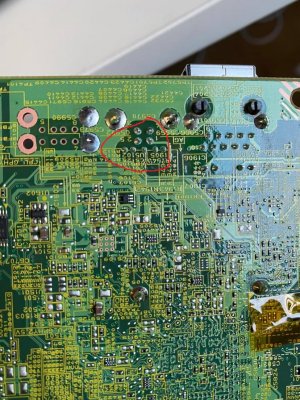Access Denied
It was like that when I got here...
- Joined
- Jun 14, 2006
- Messages
- 2,552
Not strictly a tech question so I'm putting it here. I'm after some advice with soldering.
My work have a few dozen printers out to sites for the project we're running. I swear a pack of marauding Baboons could do a better job of looking after the equipment. We've currently got in excess of 30 printers in the warehouse that work fine except the USB ports are fucked.
I've bought a single port and taken the comms board out of a printer. I plan to swap the ports out and if it works, order a shit load more ports and do all of them.
Now, this obviously involves soldering, which I've done multiple times but not in this context. I'll provide a picture of the board with a crude circle around the pins. What I need to know is what temperature I should be setting the soldering iron to and what sort of solder I should be using.
Ta!

My work have a few dozen printers out to sites for the project we're running. I swear a pack of marauding Baboons could do a better job of looking after the equipment. We've currently got in excess of 30 printers in the warehouse that work fine except the USB ports are fucked.
I've bought a single port and taken the comms board out of a printer. I plan to swap the ports out and if it works, order a shit load more ports and do all of them.
Now, this obviously involves soldering, which I've done multiple times but not in this context. I'll provide a picture of the board with a crude circle around the pins. What I need to know is what temperature I should be setting the soldering iron to and what sort of solder I should be using.
Ta!

